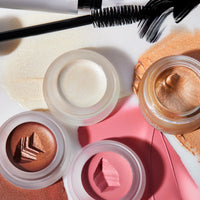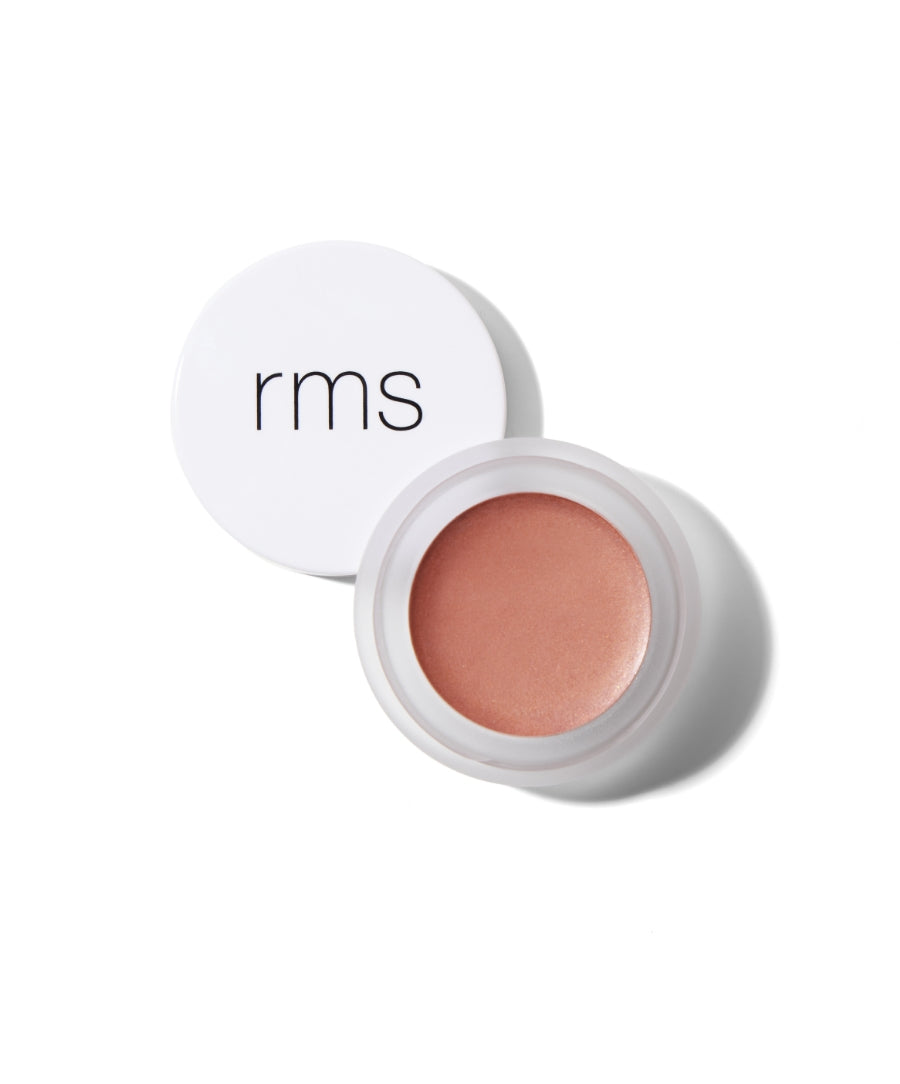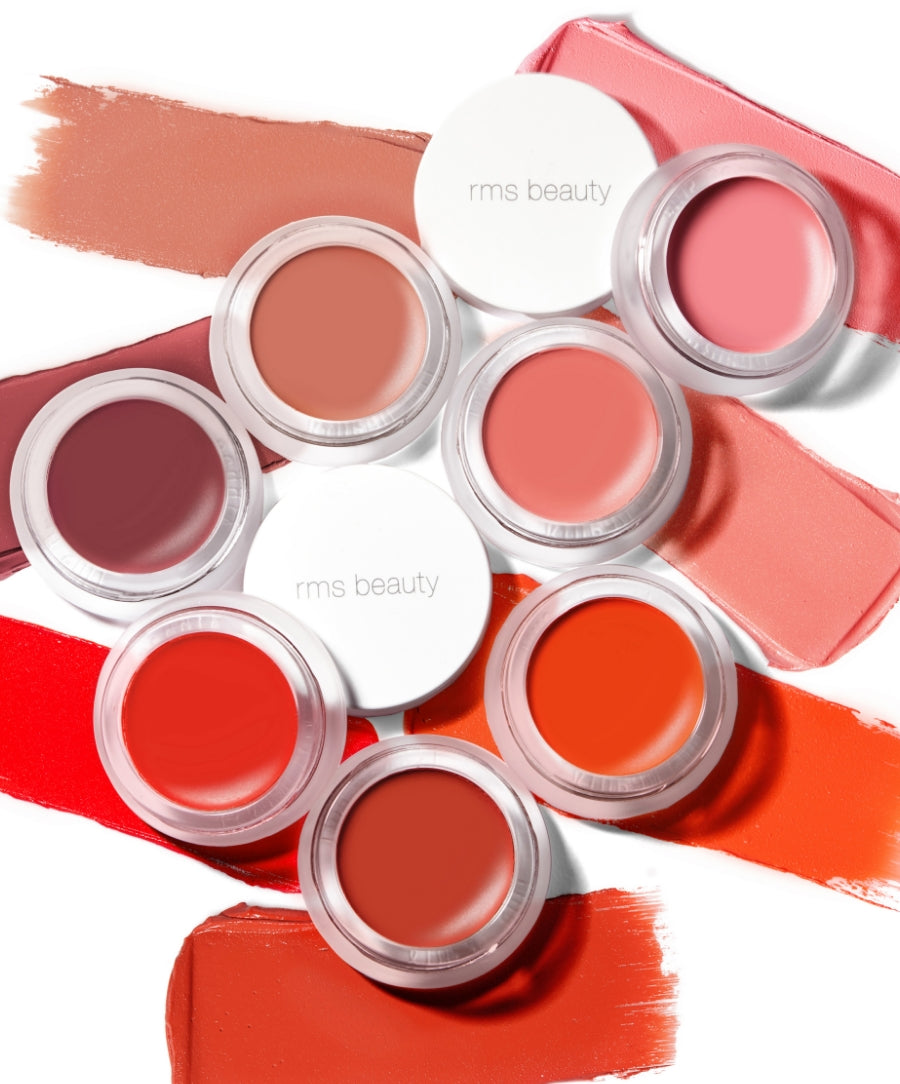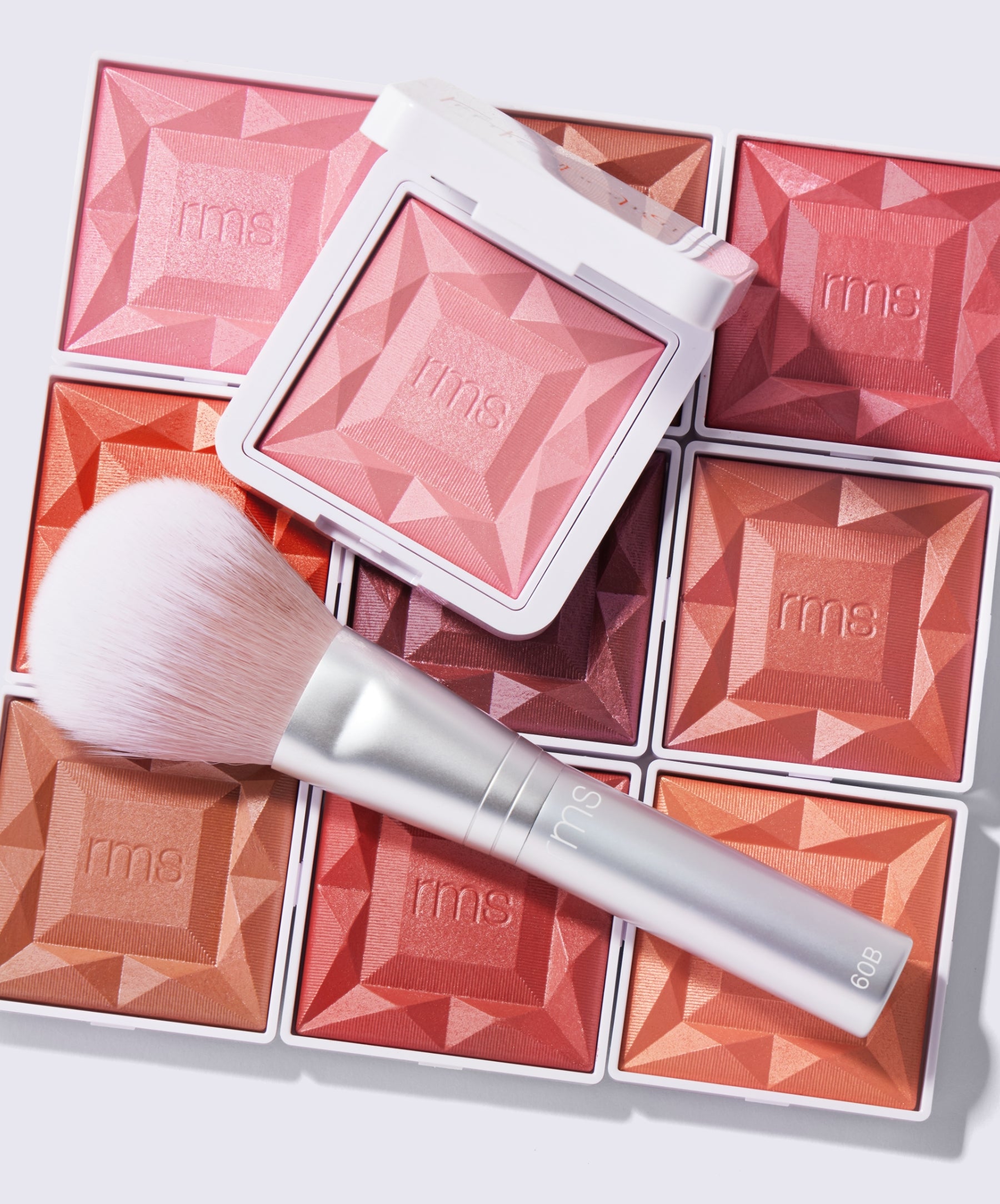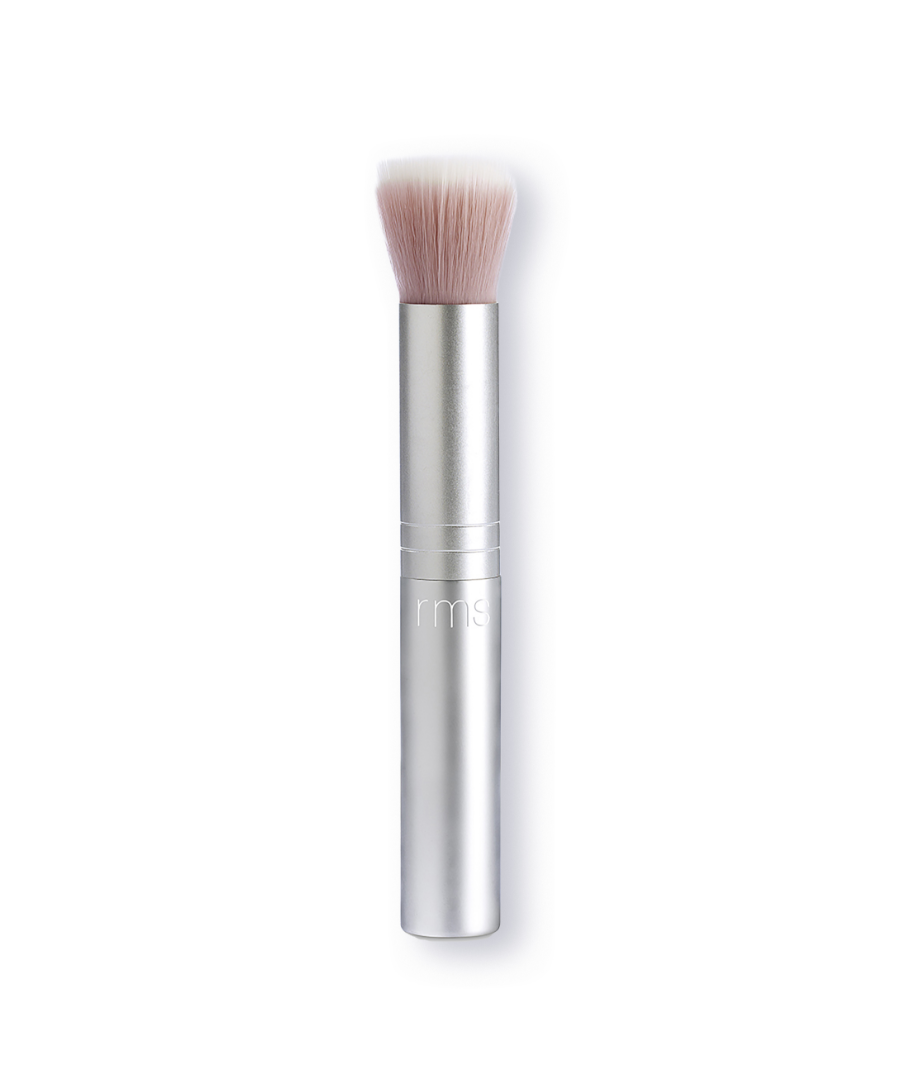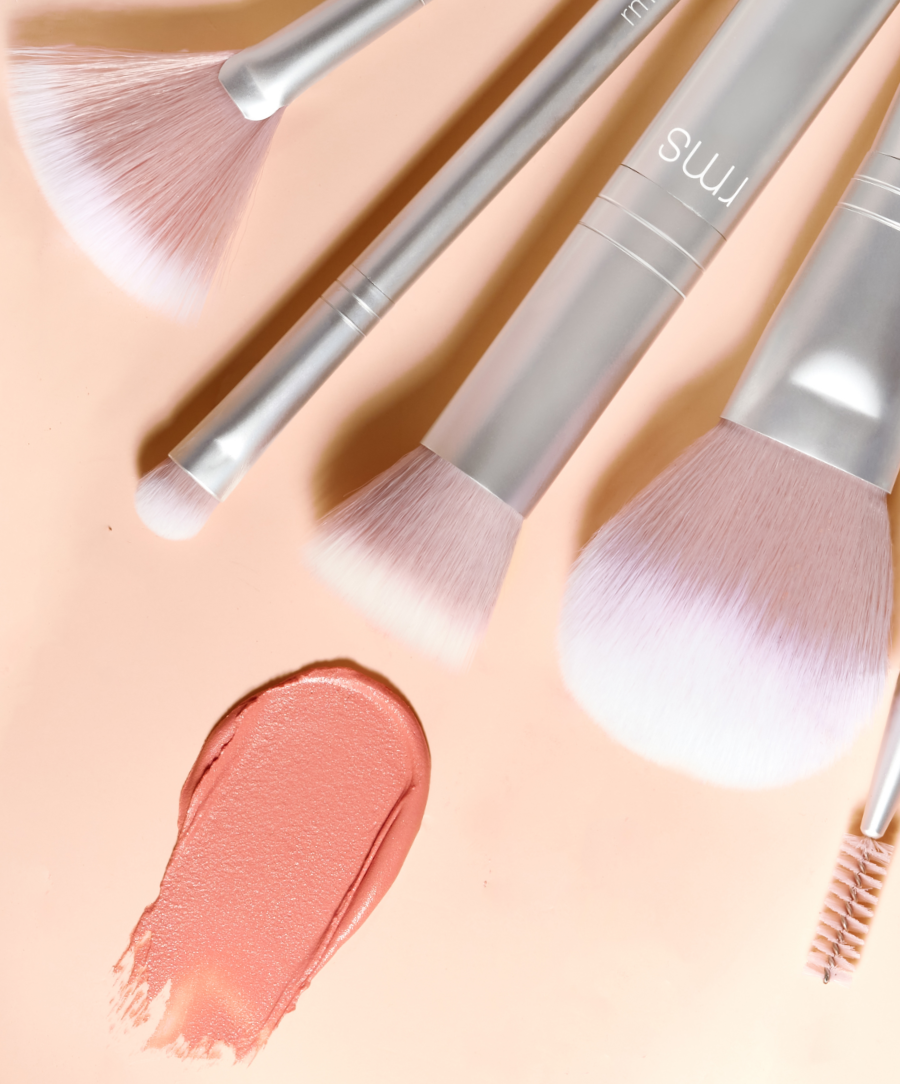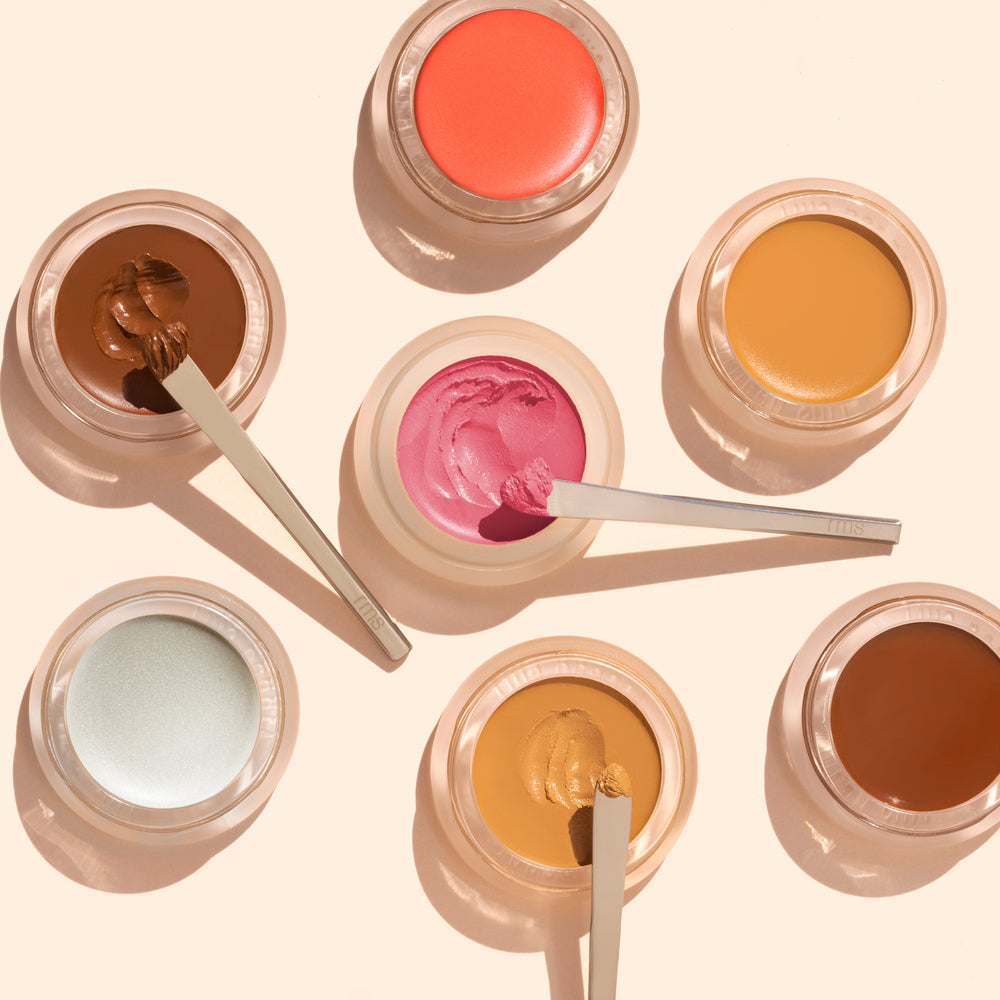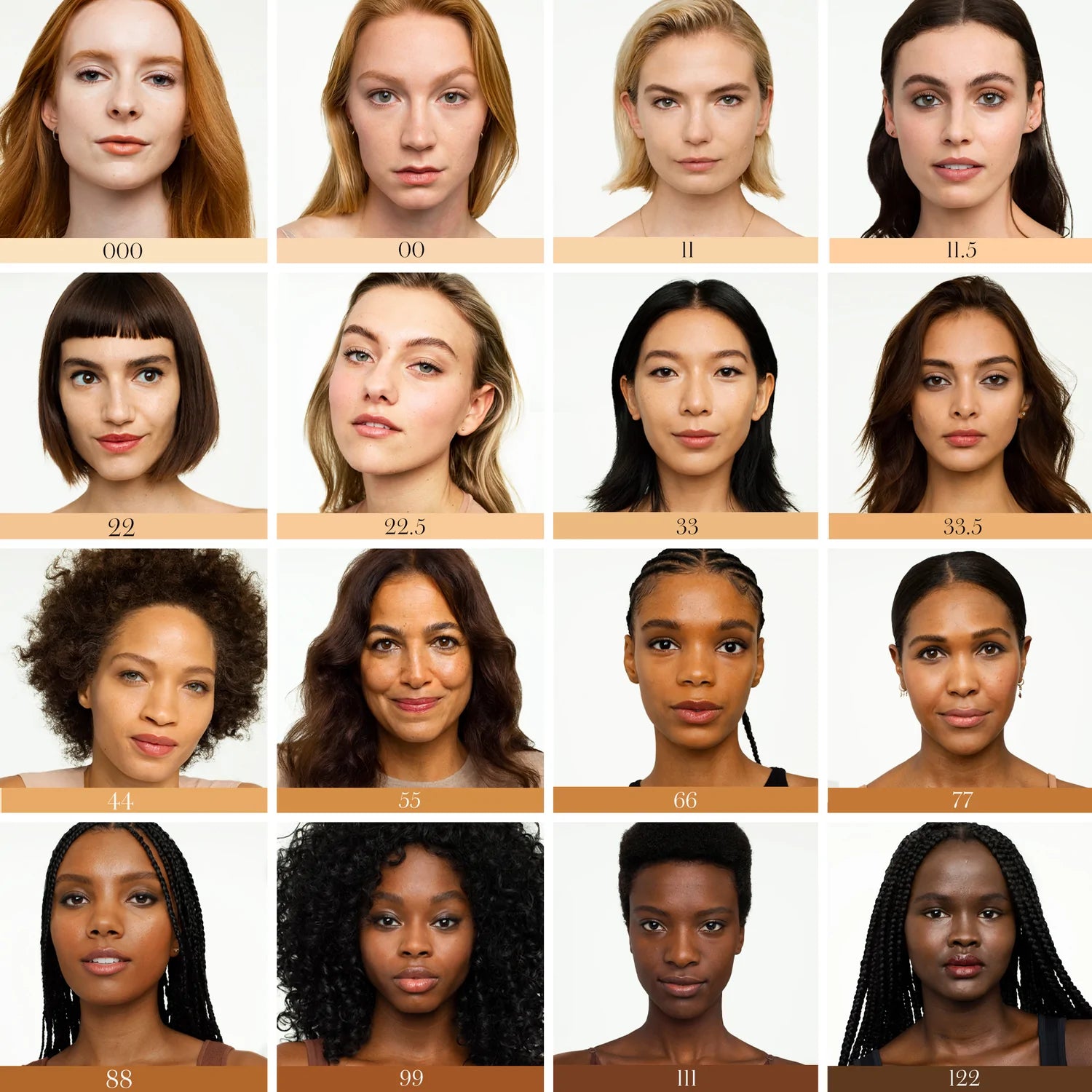Cream vs. Powder Blush: Pros, Cons & More
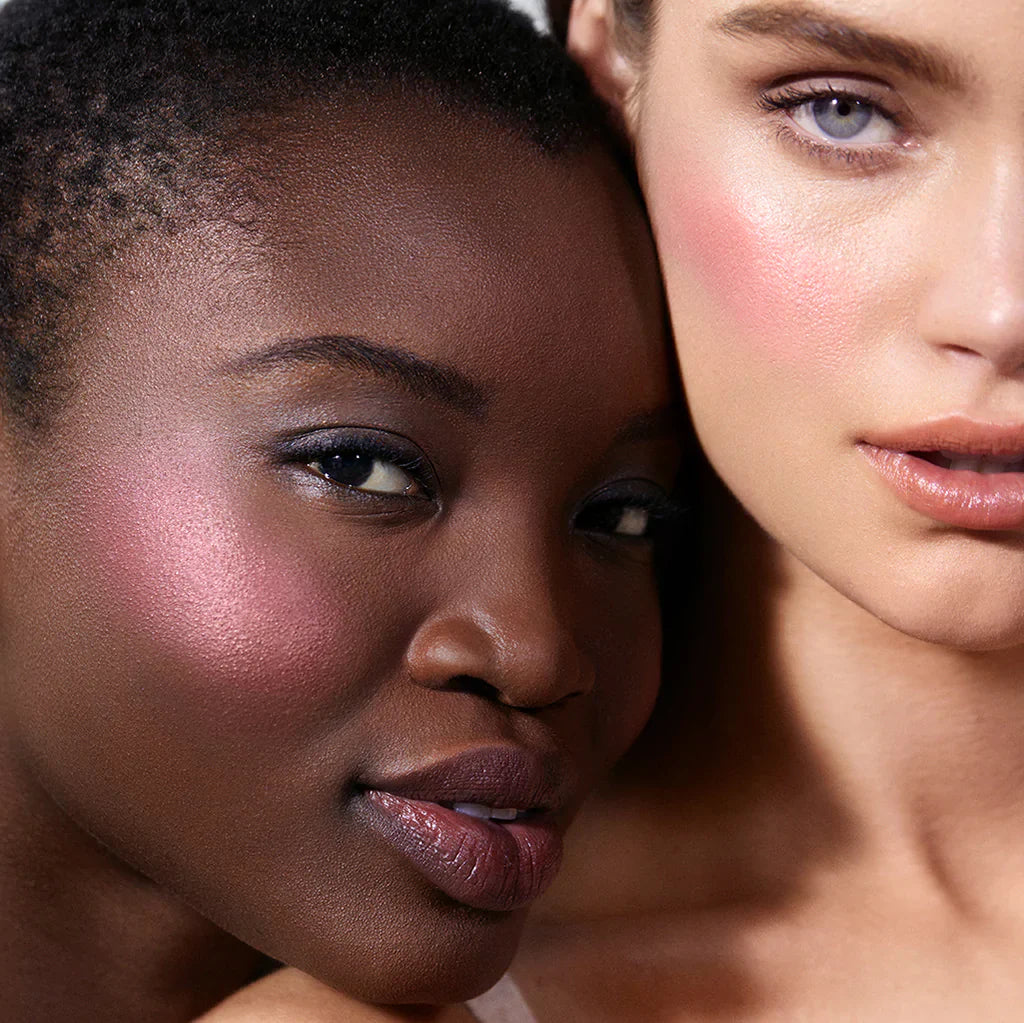
Can’t decide whether cream blush or powder blush is best for you? That’s understandable. With so many options, it can be hard to figure out which one is best for your skin type and which is best for the look you’re trying to create. Here’s your guide so that you can add effortless, natural rosiness to your face for healthy radiance.
At RMS Beauty, we love both formulas and can help you understand when to use one or the other. First, let’s talk about your skin type and understand why some formulas may work better for your skin type than others.
Why Does Skin Type Matter for Blush Formula?
Skin usually falls into one of four skin type categories: normal, oily, dry, or combination. To find your skin type, wash your face with a mild cleanser and pat it dry. Don’t apply any other products. Check the condition of your skin after 30 minutes.
- Normal skin. If your skin feels even, comfortable, and neither oily nor tight, you likely have normal skin.
- Oily skin. If, after 30 minutes, your skin feels slippery or greasy, you probably have oily skin. Your pores may be more visible, especially around your t-zone. Your skin may also be blemish-prone.
- Dry skin. Feeling like your skin is tight and itchy after 30 minutes can indicate your skin is dry. It may also peel or flake. Dry skin may also be prone to sensitivity.
- Combination skin. The most common skin type is combination skin. This means there are areas of your skin that are oily and some that are dry.
It’s easy to assume that cream blushes work best for normal to dry skin and powder blushes work best for normal to oily skin, but that isn’t always the case. Depending on the ingredients, both formulas can work for any skin type.
High-quality, food-grade ingredients are important for helping sustain your skin’s radiance and helping your product last after application.
What Is the Purpose of Blush?
Before we discuss the differences between cream and powder blush, let’s review what your blush is supposed to do.
Blush should add a flush of color to the apples of your cheeks that looks natural and effortless, never circular or angular. You can use blush to add a touch of radiant color where rosiness would appear naturally.
Cream Blush
Cream blush is exactly what it sounds like; blush that is cream-based, which means it usually contains oils or waxes. Don’t be put off if you have oily skin; plant-based oils and waxes work well with virtually all skin types.
Cream blush is easy to blend with your fingertips and can leave a luminous color and dewy finish that looks ethereal.
Cream Blush Pros
Cream blushes are great for dry and sensitive skin types, but they also work well for people with oily skin if formulated with the right ingredients. Blush that contains jojoba oil, for instance, works well for all skin types.
Jojoba oil is the closest chemical structure to our skin’s natural sebum, which means it's easily absorbed by the skin and can help support its natural moisture levels.
Cream Blush Cons
For sheer, natural looks, cream blush is the absolute go-to. However, cream blush can also be too light for some looks. It can be hard to get enough color from a cream blush, and layering may not be possible if the product moves too much on your face.
In addition, cream blush may not be the best option if you’re going to be sweating or in a hot environment. Heat can cause the oils in the blush to melt and slide down your face.
One To Try
At RMS Beauty, our cream blush contains skincare-like ingredients, so it does double duty adding sheer color to your face and helping keep your skin healthy at the same time. RMS Beauty’s Lip2Cheek is formulated with wildcrafted buriti oil and cocoa butter to ensure ultimate hydration.
This powerful product is great for both lips and cheeks and can even add a tiny kiss of color to the center of your eyelids to complete a natural, bare-faced look. Unlike other ultra-sheer cream blushes, our cream blush is richly pigmented, and a little goes a long way. Because it’s buildable, you can add a little for a sheer finish or build the color for more drama.
What Should I Know About Powder Blush?
The blush you are probably most familiar with is powder blush. Finely milled and richly pigmented, powder blush usually comes in a compact and is applied with a large brush.
Powder Blush Pros
Powder blush is your solution if you’re going for a dramatic look or simply want more color and control over blending. Applying it with the right tools is key, and unlike cream blush, it’s almost impossible to apply a powder blush with your fingers.
Powder Blush Cons
Even though it’s pretty simple to apply, a lot can go wrong with highly colorful powder blushes. Considering that you apply your blush after your face makeup, getting too much color on your cheeks can be disastrous.
It can also be challenging to find the perfect shade of powder blush. Unlike a cream blush, which absorbs into the skin and gives a luminous finish, powder blush sits on top of the skin and is naturally darker. If you pick the wrong color, it will likely be very noticeable.
One To Try
We took the hassle out of deciding between a cream and a powder blush by formulating our powder blush with jojoba oil and wildcrafted buriti oil. You get the same hydrating benefits and sheer finish you love about cream blush and the same richly-pigmented application you get with a powder.
RMS Beauty ReDimension Hydra Powder Blush is designed to be applied with a damp brush or sponge to help it easily absorb into the skin and leave behind a luminous finish that’s velvety smooth and long-lasting.
What Are Tips and Tricks for Applying Blush?
Let’s face it; a lot can go wrong when you’re applying your blush. We’ve all been the victim of unfortunate blush application that results in large pink circles on the apples of our cheeks.
To apply blush perfectly, you just need to consider your facial structure and where you would naturally flush if you went for a job or got embarrassed. Keep the color in those areas and blend outward. Adding your blush above the apples of your cheeks can even give you a lifted, supermodel-approved look!
For Mature Skin
If you’re noticing fine lines, wrinkles, or signs of aging on your face, blush can be very flattering! Applying blush to the apples of your cheeks is standard, but for mature skin, you can use blush to get a great, lifted look by applying it to the outer third of your cheekbone. This will give the look of higher cheekbones and create a more youthful look.
Avoid dragging the blush out onto your temples or beside the corners of your eyes. That can make your look appear dated and unnatural.
For Bare-Faced Looks
If you love a fresh-faced look, focus your cream blush application on the apples of your cheeks, blending outward, not inward. You want to add just enough color to the center of the apple of your cheek to look natural, so blending outward and slightly downward is key.
For a Night Out
When the occasion calls for it, a more dramatic cheek is always possible with a powder blush. Once you’ve applied it, try using a luminizer on the top of the cheekbone to help illuminate the skin and reflect light without adding glitter or sparkle.
When You Only Have Five Minutes
You can create an entire makeup look in five minutes, especially if you’re using our Lip2Cheek. This multifunctional product easily adds the right amount of believable color to your cheeks, lips, and eyelids. The food-grade, clean ingredients make it equal parts skincare and equal parts cosmetic, so you can care for your skin while you add color where it’s needed.
Blush Up!
Whether you use a cream blush for a truly natural, luminous look, or opt for a wet application powder blush, trust RMS Beauty to deliver the products that outperform traditional beauty favorites and offer your skin ingredients that help it thrive.
Sources:
Proposed Genetic Classification for the Skin Types | NCBI
Human synthetic sebum formulation and stability under conditions of use and storage | PubMed
How skin cells help fight acne | National Institutes of Health (NIH)
